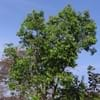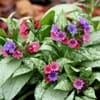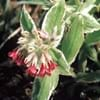Life Span
Biennial
Perennial
Origin
Not Available
Southeastern Asia, Melanesia, Micronesia
Types
Abbotswood potentilla, Daydawn potentilla, Klondike potentilla
Jackfruit, Breadnut, Figs
Habitat
Clay soil areas, Rocky areas, Wet ground
Lowland evergreen rainforest, Riverine swamp forest
USDA Hardiness Zone
3-8
10-15
Sunset Zone
A1, A2, A3, H1, H2, 1a, 1b, 2a, 2b, 3a, 3b, 4, 5, 6, 7, 8, 9, 10, 11, 12, 13, 14, 15, 16, 17, 18, 19, 20, 21, 22, 23, 24
H2
Habit
Not Available
Oval or Rounded
Flower Color
Orange, Yellow
Yellow green
Flower Color Modifier
Not Available
Bicolor
Fruit Color
Not Available
Yellow, Green, Yellow green, Brown
Leaf Color in Spring
Green, Light Green
Dark Green
Leaf Color in Summer
Not Available
Dark Green
Leaf Color in Fall
Not Available
Dark Green
Leaf Color in Winter
Light Green
Light Green
Leaf Shape
Small elliptic
Irregular
Plant Season
Early Fall, Spring
Spring, Summer, Fall, Winter
Sunlight
Full Sun, Partial shade, Partial Sun
Full Sun, Partial Sun
Growth Rate
Not Available
Fast
Type of Soil
Well drained
Loam, Sand
The pH of Soil
Slightly Alkaline
Acidic, Neutral, Alkaline
Soil Drainage
Not Available
Average
Bloom Time
Late Summer, Summer
Indeterminate
Repeat Bloomer
Not Available
Yes
Tolerances
Drought
Drought
Where to Plant?
Ground
Ground
How to Plant?
Stem Planting
Grafting, Rooted stem cutting, Seedlings
Plant Maintenance
Low
Medium
Watering Requirements
Average Water Needs, Needs watering once a week, Water less during winter, Water more in summer, Water when soil is dry
Average Water Needs, Never Over-water, occasional watering once established, Water daily during growing season, Water Deeply
In Summer
Lots of watering
Lots of watering
In Spring
Moderate
Moderate
In Winter
Average Water
Average Water
Soil pH
Not Available
Acidic, Neutral, Alkaline
Soil Type
Not Available
Loam, Sand
Soil Drainage Capacity
Not Available
Average
Sun Exposure
Full Sun, Partial Sun
Full Sun, Partial Sun
Pruning
Prune if you want to improve plant shape, Prune in early spring, Remove damaged leaves, Remove dead branches, Remove dead leaves
Prune every year, Prune if you want to improve plant shape, Remove branches, Remove damaged leaves, Remove dead branches, Remove dead leaves, Remove dead or diseased plant parts
Fertilizers
Apply 10-10-10 amount
20-20-20 amount, All-Purpose Liquid Fertilizer
Pests and Diseases
Red blotch
Red blotch
Plant Tolerance
Drought
Drought
Flower Petal Number
Not Available
Not Available
Showy Fruit
Not Available
Yes
Edible Fruit
Not Available
Yes
Fragrant Flower
Not Available
No
Fragrant Fruit
Not Available
No
Fragrant Leaf
Not Available
No
Fragrant Bark/Stem
Not Available
No
Showy Foliage
Not Available
Yes
Showy Bark
Not Available
No
Foliage Texture
Not Available
Coarse
Foliage Sheen
Not Available
Glossy
Invasive
Not Available
No
Self-Sowing
Not Available
No
Attracts
Bees, Butterflies
Birds, Not Available
Allergy
Avoid during Pregnancy
allergic reaction
Aesthetic Uses
Showy Purposes, Used for decorating walls, fences, gates, hedges, etc.
Not Used For Aesthetic Purpose
Beauty Benefits
Good for skin, Skin cleanser, Skin Problems
Good for skin, Promotes Healthy Hair, Removes dandruff, Speed hair growth
Edible Uses
Insignificant
Yes
Environmental Uses
Air purification, Prevent Soil Erosion, Provides ground cover, soil erosion prevension on hill slopes
Air purification, Nesting sites for birds, Shadow Tree, Wildlife
Medicinal Uses
Antibiotic, Astringent, Diarrhea, Haemostatic, Hypoglycaemic, Mildly painful menstruation, Odontalgic, Premenstrual syndrome, Swelling
Cancer, cholesterol-lowering, Heart problems, High cholestrol, Immunity, Skin Disorders, Weight loss
Part of Plant Used
Flowers, Root
Fruits
Other Uses
Cosmetics, Showy Purposes, Used as a dye
Used As Food, Used for its medicinal properties
Used As Indoor Plant
Insignificant
No
Used As Outdoor Plant
Yes
Yes
Garden Design
Not Available
Edible, Feature Plant, Fruit / Fruit Tree, Shade Trees, Tropical
Botanical Name
POTENTILLA
ARTOCARPUS altilis
Common Name
Potentilla
Breadfruit
In Hindi
Potentilla plant
Breadfruit Tree
In German
Potentilla Pflanze
Brotfruchtbaum
In French
plante Potentilla
Breadfruit Arbre
In Spanish
planta Potentilla
árbol del pan
In Greek
φυτό potentilla
αρτόδεντρο Δέντρο
In Portuguese
planta Potentilla
Árvore de fruta-pão
In Polish
Potentilla roślin
Breadfruit drzewo
In Latin
Potentilla herba
Arum
Phylum
Vascular plant
Magnoliophyta
Class
Magnoliopsida
Magnoliopsida
Genus
Potentilla
Artocarpus
Clade
Angiosperms, Eudicots, Rosids
Angiosperms, Eudicots, Rosids
Tribe
Not Available
Artocarpeae
Subfamily
Rosoideae
Not Available
Season and Care of Potentilla and Breadfruit
Season and care of Potentilla and Breadfruit is important to know. While considering everything about Potentilla and Breadfruit Care, growing season is an essential factor. Potentilla season is Early Fall and Spring and Breadfruit season is Early Fall and Spring. The type of soil for Potentilla is Well drained and for Breadfruit is Loam, Sand while the PH of soil for Potentilla is Slightly Alkaline and for Breadfruit is Acidic, Neutral, Alkaline.
Potentilla and Breadfruit Physical Information
Potentilla and Breadfruit physical information is very important for comparison. Potentilla height is 91.44 cm and width 91.44 cm whereas Breadfruit height is 2,600.00 cm and width 600.00 cm. The color specification of Potentilla and Breadfruit are as follows:
Potentilla flower color: Orange and Yellow
Potentilla leaf color: Green, Light Green
Breadfruit flower color: Yellow green
- Breadfruit leaf color: Dark Green
Care of Potentilla and Breadfruit
Care of Potentilla and Breadfruit include pruning, fertilizers, watering etc. Potentilla pruning is done Prune if you want to improve plant shape, Prune in early spring, Remove damaged leaves, Remove dead branches and Remove dead leaves and Breadfruit pruning is done Prune every year, Prune if you want to improve plant shape, Remove branches, Remove damaged leaves, Remove dead branches, Remove dead leaves and Remove dead or diseased plant parts. In summer Potentilla needs Lots of watering and in winter, it needs Average Water. Whereas, in summer Breadfruit needs Lots of watering and in winter, it needs Average Water.





